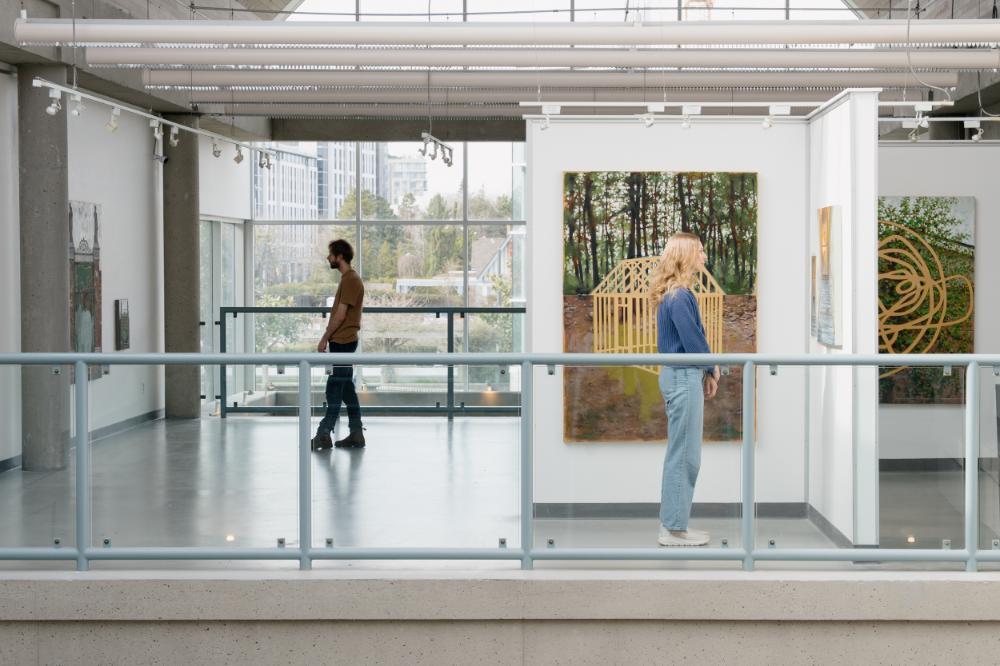The canonical histories of modern and contemporary art have been written largely without serious consideration of religion. This does not mean that religion has been absent or irrelevant. Indeed, once one begins looking for it, one finds religious references, concepts, and influences woven throughout these histories. But for various reasons these references, concepts, and influences became hermeneutically inaccessible in the dominant discourses about art made in the past 170 years or so. This creates a strange situation: Even as religious traditions have shaped many major twentieth- and twenty-first-century artists and artworks (and the sociocultural contexts in which they are received and circulated), when one turns to the art-historical scholarship about these periods, one finds religion playing little or no constructive role in the writing about these artists and artworks.
This situation has been shifting in recent years. Since the turn of the twenty-first century, there has been a marked increase in attention to religion and spirituality in contemporary art, among artists and scholars alike. This attention tends to be dispersed across radically different interpretive priorities and vocabularies, often lacking a sustained interdisciplinary discourse that holds up well both as scholarship of art and as scholarship of religion. An especially strong secularization theory within the scholarship of twentieth-century art has obstructed vital understandings of modern and contemporary art histories, and it is also still subtly governing current inquiries into religion and spirituality in those histories.
The Invisibility of Religion in Contemporary Art is a study of this situation and an adjustment to it, offering a detailed rethinking of the historical and theoretical contexts in which the current discourses of religion and spirituality in contemporary art are operating, and an argument for why and how these discourses require more concentrated critical study of the (often implicit) theologies in play in the history, theory, and criticism of contemporary art. Twentieth- and twenty-first-century art is deeply enwoven with religious contexts, spiritual concerns, and theological conceptualities, but these various threads remain extremely underinterpreted in the scholarship of modern and contemporary art—to the extent that they are often functionally invisible in this scholarship. My aim is to understand and revise the ways these dynamics of (in)visibility work.
The Strangeness of Religion in Contemporary Art
Over the past two or three decades, several scholars have begun asking about how religion appears or disappears in the writing of modern and contemporary art histories. Art historian James Elkins, for example, has published several texts questioning the ways that religion might subtly be operating in the discourse of modern and contemporary art, often under other vocabularies. His On the Strange Place of Religion in Contemporary Art (2004) drew attention to cases in which “religious meaning” is playing some sort of conspicuous role in the work of many contemporary artists, even as “it seems there is no acceptable way of talking about what makes the work religious or spiritual.” 1
More recently, in a 2011 book chapter on the “implicit religious discourses in art history,” Elkins argues that contemporary art-historical writing is often “articulated as an echo, an analogy, or a metaphor of interests and concepts whose provenance is the history of Christian theology. Some of art history, in this way of thinking, is a shadow discourse. It wants to say things about transcendence, the sacred, the spiritual, and the religious, but in an academic setting—and for many reasons that confuse and fascinate me, it feels it cannot.” 2 Indeed, he asks whether it might be intelligible and productive to find oneself “reading art historical accounts as muffled reports of meditations—many unarticulated, and perhaps unrecognized as such—on religious questions.” 3 Elkins frames the issue this way:
Let’s articulate the problem in the form of two assertions. First, it is not a secret that much of modern and postmodern art criticism, theory, and history are infused with religious themes—like the ink in a blotter, as Walter Benjamin said. That might fairly be considered an open secret. But then—and this is the second assertion—the supposedly open secret really is a secret because it is so seldom analyzed, and when it is analyzed something in the writing is ruined.
From these two assertions follows a conundrum: what is the best way to analyze a secret that is so widely known that it is acknowledged, at the very start of any number of conversations, and just as quickly forgotten, in the tacit understanding that it might do damage? 4
In the context of these “on-again, off-again dynamics of the secret-that-is-not-a-secret,” religious meanings are not only fragile, but also fragilizing.5 To draw them out into the public square of contemporary art discourse is to damage both them and the compelling apparatus that hides them.
If one spends much time shuttling between artists’ studios, prominent galleries and museums, academic art libraries, and departments of art history, one soon encounters precisely the kind of strangeness Elkins describes. Many prominent artists are thinking quite seriously about religion, spirituality, and theology—whether or not they consider themselves to be personally “religious”—and they are addressing these topics in widely varying ways. Yet when one moves to the discourse about these same artists (public artist talks, scholarly lectures, conference presentations, and the various forms of writing surrounding their work, including exhibition catalogues, gallery brochures and wall labels, exhibition reviews, scholarly books and articles, etc.), this aspect of their work tends to receive only cursory thinking or simply disappears altogether, as serious analysis gets channeled through more well-developed critical models organized around political power, identity, sublimated desire, semiotic instability, material procedures, and so on. And this is not simply the doing of scholars; the artists in question are often quite cagey when it comes to speaking publicly about these topics, especially in cases in which they are themselves personally religious or, more commonly, have quite a complicated, conflicted relationship with religion. As a result, even if religion has played and continues to play an important role in the work of many prominent artists, this aspect of their work is often invisible in the discussion, writing, and teaching about their work.
The written histories of twentieth-century art have significantly under interpreted the religious contexts and theological implications of modernist and contemporary art, especially as they pertain to Judaism and Christianity but also well beyond these. This is not to claim that, despite all appearances, modernism actually turns out to be a religious cipher or a kind of crypto-Christian art. But it is to claim that modernism did not simply leave religion behind or fall theologically mute, nor have the relations between them been simply oppositional or antagonistic. The relations are more complicated and more (theologically) interesting than that, and they stand to be interpreted as such.
Religion, Theology, and the Writing of Art History
The Invisibility of Religion in Contemporary Art is a field guide for those traversing—from whatever perspective or starting points—the current discourses of contemporary art and religion. But it also offers an argument for how and why these discourses benefit from more careful critical engagement with theology in the histories and grammars of contemporary art. Indeed, we do not sufficiently address the questions of “religion” without this.
Understandably, readers may worry about my use of the word “theology” in this context. The term rarely appears in contemporary art discourse, and then often only as a disapprobatory slur (insofar as calling a concept “theological” or “quasi-theological” is often highly dismissive). There are good reasons for art history’s allergy to theology, but these reasons usually trade on caricatures of theology and generally fail to account for significant evidence that contradicts them. Scholars of art tend to regard theology in overly dogmatic terms, such that it is relevant to advanced art inquiry only in instances in which artworks are intentionally and sincerely doctrinal, couched in overtly religious imagery or overtly religious contexts and functions. This leaves little capacity for recognizing how theological intelligence might operate in modern and contemporary art in more complex ways. This flatness is striking, given that we have such sophisticated ways of speaking about most other modes of reasoning in art.
There are various other terms on offer here, but I think the proper word is “theology,” designating a particular field of concerns, horizon of intelligibility, and domain of extended reasoning (including nonlinguistic reasoning in the form of visual-spatial relations and material artistic procedures) pertaining to world-in-relation-to-God. This kind of reasoning need not mention God or use any conspicuously theological jargon (nor have any self-consciously theological intention) for it to have implicitly theological genealogies and valencies. Perceiving these requires studying works in relation to particular theological traditions, but it does not mean correlating artworks to those traditions or reducing the inquiry to questions of alignment to the orthodoxies of those traditions. Rather, this requires a form of constructive theological reasoning that is “appropriately modest” in the ways it contributes a particular angle of vision within the incremental, contingent, distributed processes of understanding histories of art. 6
This will likely require readers, from both the art-historical and theological sides of this study, to revisit their assumptions about what theology is and what it “looks” like. This revisiting might be aided by borrowing some sentences from the end of T.J. Clark’s book on Gustave Courbet, Image of the People (1973). In the course of his argument, which proved to be seminal to the development of the social history of art, Clark reworks how his readers perceive the political valency of paintings:
If politics are words and programmes, Courbet’s painting has nothing to do with them ... There are of course other definitions of ‘political.’ The world of politics is not just a verbal world, though it is that primarily. There is a politics which is wordless, in the way that hunger is, or greed. It often ends in a wordless gesture—a scythe on the shoulder, a burning rick, a barricade. And this is the kind of politics the artist thrives on; he makes the distinction, as he must do, between an ideology and the facts it attempts to describe. 7
Whatever theology might mean for, and in conversation with, contemporary art, it will need to be thought at a similarly fundamental level. In fact, we could hardly find a better description to get us onto a productive trajectory than by lightly (and, I hope, forgivably) altering Clark’s paragraph, so that it performs a similar reframing for theology:
There are of course other definitions of “theological.” The world of theology is not just a verbal world, though it is that primarily. There is a theology which is wordless, in the way that hunger is, or greed, or gratitude. It often ends in a wordless gesture—a journey into the desert, a meal delivery, a refusal to defend oneself, and of course perhaps also a scythe on the shoulder, a burning rick, a barricade. And this is the kind of theology the artist thrives on; he makes the distinction, as he must do, between doctrine and the facts it attempts to describe.
Admittedly, that latter differentiation “between doctrine and the facts it attempts to describe” is too tidy. It plays into the caricature of doctrine as a kind of arid program laid on top of the world (sometimes it is), and it underplays the possibility that some “facts” only come to light and become intelligible in and through the development of doctrinal reasoning. But the overall point stands: If theology is about anything, it is about the way the world is, in its most fundamental and concrete facets of being. Contemporary art continues to do (wordless) theology about and within many of these facets, and, in turn, theology has much thinking to do about and within contemporary art.
This article is composed of lightly revised excerpts from the introduction of Jonathan A. Anderson’s new book, The Invisibility of Religion in Contemporary Art (University of Notre Dame Press, 2025). Copyright © 2025 by the University of Notre Dame. Used by permission of University of Notre Dame Press, Notre Dame, IN 46556, USA. undpress.nd.edu

